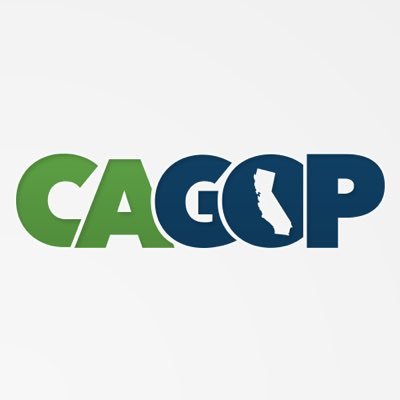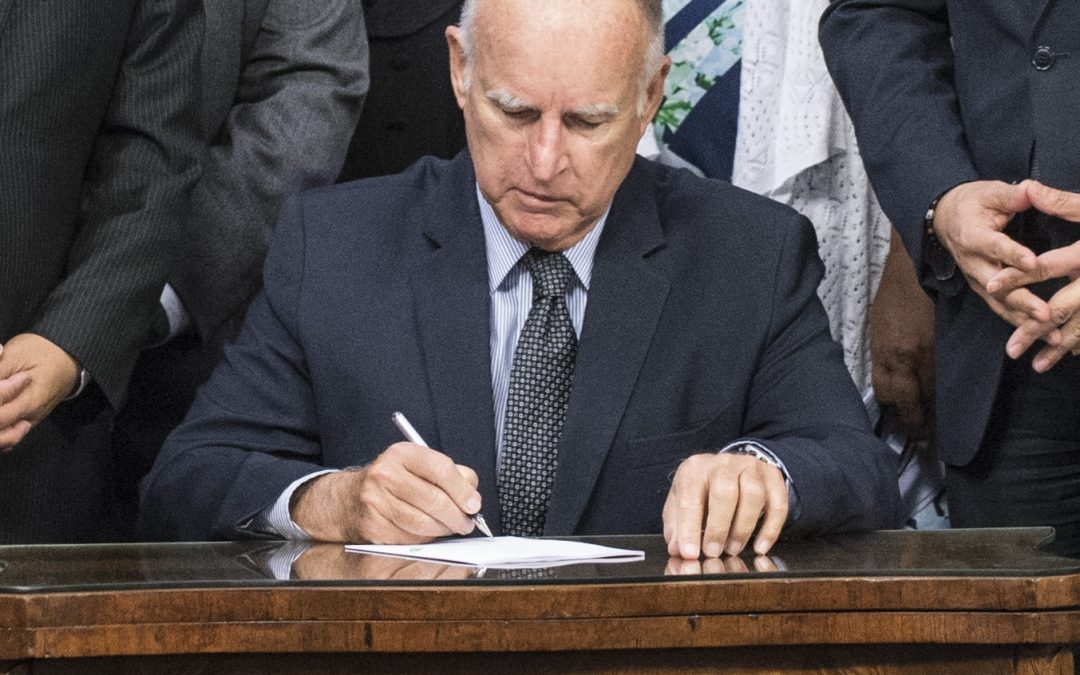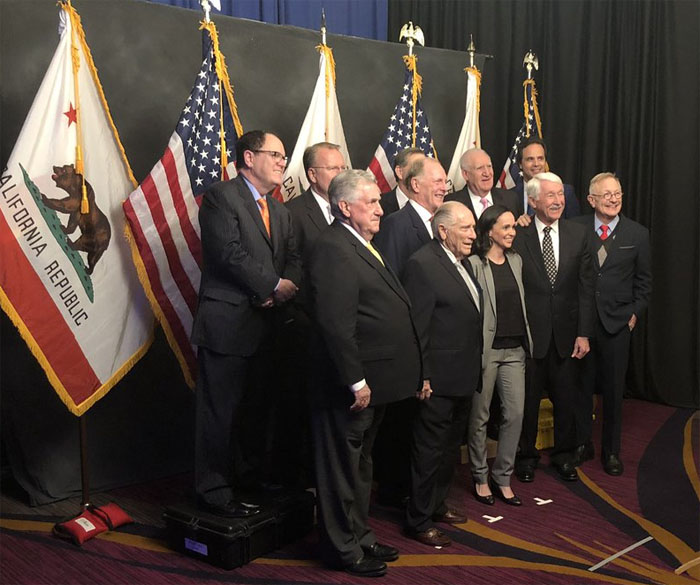
California’s Dying GOP Needs a New, Living Political Platform
All they need is a Republican with courage
By Edward Ring, June 21, 2019 2:15 am
As a statewide political force, California’s Republican Party is dead. Sure, there are isolated pockets of GOP power; the State-of-Jefferson gang up north, a handful of reliable holdouts in the southeastern counties. And yes, Orange and San Diego counties remain battlegrounds, where Republicans can’t yet be counted out. But scattered redoubts of Republican resistance in the deep blue state of California do not constitute a viable Party.
Let’s recap. Democrats outnumber Republicans in the state senate 28 to 10, in the state assembly 61 to 19, and in the state congressional caucus 46 to 7. Not one high state office, from Governor on down, is held by a Republican; and California hasn’t had a Republican U.S. Senator since 1992.
There are lots of good reasons why Republicans in California are dead. Reciting them grows tiresome, however. Prop. 187 (banned benefits for illegal aliens) back in 1994 lost the Latino vote forever. Prop. 8 (banned gay marriage) back in 2008 alienated every social liberal in a socially liberal state forever. And then there’s all that money that pours into the Democratic Party from public sector unions, hundreds of millions every year. We get it.
Excuses. Old news. Ancient history.
Today Californian voters are ready to reject the Democrats and all they need is a Republican with the courage to tell them two things: (1) Democratic rule has destroyed California’s system of public education and made it impossible to afford to live here, and (2) Republicans have a new political platform that will rescue California’s schools and lower the cost of living.
Communicating item one ought to be easy. Failing schools. Homelessness. Millions living in poverty. Bad roads. Water shortages. Ridiculously expensive electricity, gasoline, utilities, even food. Overpriced homes. Regressive taxes. Punitive regulations that specifically target small businesses. We’ve heard this litany again and again. It’s true. So what? Which calls to mind the other thing to tell: What is the Republican solution?
It’s not enough for Republicans to say what’s wrong with Democratic control of California unless they have a plan to change it. That can start with the platform of the state Party. Here, the differences between California’s Democratic Party and California’s Republican Party are obvious, and indicative of just how moribund the CA GOP operation has become.
Comparing the CA DEM Platform to the CA GOP Platform
On the CA DEM website – which has a national Alexa ranking of 65,000, which means people actually use the website – the Party platform is easily found on a homepage speckled with dozens of links to in-depth content. It is noted that the CA DEM platform is updated every two years. There are links to both the platform committee page as well as a link to submit proposals to include on the next platform update. The platform itself is reached via 23 links to specific sections covering issues. If you go to any of those sections, you see detailed references to current legislative initiatives. The CA DEM website is built and operated by a team of professionals, and it shows.
The CA GOP website, by contrast – which has a national Alexa ranking of 470,000, which means that almost nobody visits it – has a platform that is only found on a static PDF document, making it difficult to immediately click over to the GOP stand on any particular issue of interest. The document leads off with the issue of “AGING CALIFORNIANS” an unfortunate choice, since it telegraphs the CA GOP’s attachment to the past. To be fair, the issues are arranged alphabetically. But why aren’t these issues rendered in searchable HTML, with specific pages for each issue, and a table of contents that are clickable links?
These sorts of upgrades don’t cost real money. They are tasks an intern can perform, unless of course that intern works for a supervisor who reports to a VP who reports to a partner who marks up the costs for all four participants, adding overhead, to fulfill the terms of a lucrative consulting contract. But that would never happen, would it? CA GOP can easily allay such unfounded paranoia. Update the website. The Democrats have unlimited funds. California’s Republicans don’t. Adapt.
And then there’s the whole process. Where is a link for GOP members to send suggestions? Where is a link explaining who is on the platform committee? Why does it take a phone call to GOP HQ to find out that the platform is only updated every four years. And WHY is it only updated every four years?
It gets worse. Reading the GOP platform makes it obvious this is not a living document, but rather a legacy composition that gets minor tweaks every four years. Unlike the Democratic platform, it deals in generalities. Ironically, the Democrats who are in charge can afford to spew generalities, but they don’t. The CA GOP, as the walking dead Party, needs specific, exciting new ideas, big ideas, to bring itself back to live. Where are they?
Reading the CA GOP platform is depressing. “We believe in stewardship of California’s natural resources.” “We believe in equal opportunity.” “We believe public service is a trust.” “We affirm the family as the natural and indispensable institution for human development.” “People make better decisions than does government.” Blah blah blah. BLAH BLAH BLAH BLAH BLAH. At least someone used a spell checker. After eleven pages of mush, the PDF mercifully closes with the following: “Platform adopted on September 20, 2015.”
Newsflash. In politics, September 20, 2015 was a thousand years ago. And just for giggles, here’s a bet: I’ll buy the CA GOP chairman lunch at a Sacramento restaurant of her choosing if she can demonstrate that even 25 percent of the words on that document differ from the platform in effect on Sept. 20, 2011.
Towards a New, Living Platform for California’s GOP California’s GOP
To win back California, you don’t fill a big tent by creating a platform filled with shopworn, safe generalities. You pick big, controversial issues that will have transformative impact. And you assert, without apology, principles you know are right:
- Competitive abundance instead of politically contrived scarcity.
- Equality of opportunity instead of equality of outcome.
- Practical environmentalism instead of extremism.
The rhetoric that can derive from these principles should cascade into every set of talking points, campaign flyers, op-eds and responses to attacks from Democrats. The rhetoric should occupy and hold the moral high ground:
- There is a moral value to providing opportunity by making California affordable.
- There is a moral value to instilling pride by abandoning race and gender preferences.
- There is a moral value to embracing policies of abundance – by turning the private sector loose to increase the supply of housing, energy, water, transportation.
One strategy that would brand the GOP as a serious statewide organization would be to require any candidate endorsed by the California GOP to not only themselves pledge to support the Party platform, but to require their donors to also sign a pledge to endorse the Party platform. This might attract as many major donors as it alienates, but there are 124 billionaires living in California. Go find one.
While asking for a pledge to support the GOP platform as a condition of making a donation would drive away most all public employee union money – little of which accrues to GOP candidates anyway – it would also shine a spotlight on the naked, one sided partisanship of these supposedly neutral organizations. And it might help nurture a Janus-enabled insurgency led by conservative members of these unions.
Another strategy that could deliver to the California GOP immediate potential to transform California would be to devote resources not only to endorsing and supporting candidates, but to back state ballot initiatives that would reflect the goals of the Party platform. It is possible that voters will support a slate of ballot initiatives that could transform California politics overnight, sooner than restoring a Republican majority to the state legislature.
Moreover, by aligning the Party platform with a slate of initiatives, along with candidates who support the Party platform in exchange for the Party’s endorsement, there would be a synergy between campaigns for these state ballot initiatives and the campaign platforms of GOP candidates. Call it the “Contract with California.” Newt Gingrich tried something similar back in 1994 with the “Contract with America.” It worked.
Here then, are twelve specific proposals that might constitute a platform to be aggressively promoted by California’s Republican Party:
A CONTRACT WITH CALIFORNIA
(1) Public Education Reform: K-12 Tenure, Layoff, Dismissal Policies: California teachers will be required to complete a minimum of five years of classroom teaching prior to being granted tenure. School principals shall have sole authority over what teachers may be subject to layoff, in order to allow merit instead of seniority to govern layoff decisions. The process for dismissing incompetent or ineffective teachers shall be streamlined.
(2) Enable Charter Schools: The right of nonprofit institutions to open charter public schools shall not be infringed; no limit shall be set on the number of charter schools. Charter school approval shall be binding based on any one of the following agencies granting approval – the local school district board, the local county board of education, or the California Dept. of Education.
(3) Housing Abundance: Repeal the “Sustainable Communities and Climate Protection Act” of 2008 and make it easy for developers to build homes on the suburban and exurban fringes, instead of just “in-fill” that destroys existing neighborhoods. Cancel the war on the single family dwelling, and allow developers (or in some cases even require them) to build homes with large yards again. Repeal excessive building codes such as mandatory photovoltaic roof panels. Create a regulatory environment that encourages private investment in new housing developments instead of discouraging it.
(4) Helping the Homeless: California’s attorney general will challenge the decision in Jones vs the City of Los Angeles, that ruled that law enforcement and city officials can no longer enforce the ban on sleeping on sidewalks anywhere within the Los Angeles city limits until a sufficient amount of permanent supportive housing could be built. To help all the homeless, and to get them off the streets, argue for ruling that permits cost-effective shelter, hospitalization, and incarceration, as appropriate.
(5) Restore Law and Order: Repeal Prop 47 which downgraded property crimes and drug offenses, making it impossible to engage in “broken windows” policing. Repeal Prop. 57, which released thousands of criminals back onto California’s streets. Repeal AB 953, which needlessly bureaucratized police work and made it harder to make arrests based on objective criteria.
(6) CEQA Reform: California’s Environmental Quality Act of 1970, “CEQA,” will be modified as follows: (a) duplicative lawsuits shall be prohibited, (b) all entities that file CEQA lawsuits will be required to fully disclose their identities and their environmental or non-environmental interest, (c) court rules that still enable delaying tactics will be illegal, (d) rulings that stop entire projects on a single issue will be prohibited, (d) the loser in CEQA litigation will be liable for legal fees.
(7) Renewables Pricing Reform: California will require renewable electricity suppliers to include in their pricing the costs for them to deliver reliable continuous power 24 hours per day, 365 days per year, and lower its renewable portfolio mandate to 20 percent until renewables are competitive with other forms of energy using this new pricing model.
(8) Nuclear Power Development: California’s government will use all its powers to promote nuclear power. It will recommission the San Onofre nuclear power station and construct additional reactors. It will cancel the planned decommissioning of Diablo Canyon nuclear power station and construct additional reactors. It will solicit bids for public/private financing of additional nuclear power capacity with a goal of increasing total California based nuclear power output from the current 2.1 gigawatts to at least 10 gigawatts. The state attorney general will aggressively litigate in support of fast tracking approval and construction of these projects.
(9) Water Infrastructure Funding: California will issue general obligation bonds in the sum of $30 billion to accomplish the following specific projects: (a) $3.0 billion for the Sites Reservoir (supplementing funds already granted) with storage capacity of 2.0 million acre feet (MAF), (b) $3.0 billion for the Temperance Flat Reservoir with storage capacity of 1.0 MAF, (c) $7.5 billion for desalination plants on the California coast with annual capacity of 0.5 MAF, (d) $7.5 billion to retrofit urban water treatment plants statewide to potable standards with annual reuse capacity of 1.0 MAF, (e) $4.0 billion to retrofit existing aqueducts with priority on the Friant/Kern canal, (f) $5.0 billion for seismic retrofits to levees statewide, with a focus on the Delta. The timeline for submittal of proposals and awarding of funds shall not exceed 12 months. The state attorney general will aggressively litigate in support of fast tracking approval and construction of these projects.
(10) Additional Highway Funding: California will issue general obligation bonds in the sum of 30 billion to upgrade and add lanes to every major freeway in the state. Priority shall be granted to construction of high speed lanes and smart lanes. These funds will supplement funds already awarded for road construction. The timeline for submittal of proposals and awarding of funds shall not exceed 12 months. The state attorney general will aggressively litigate in support of fast tracking approval and construction of these projects.
(11) Pension Benefit Reform: The California constitution will be amended to eliminate the so-called “California Rule,” which allegedly prohibits modification to pension benefit accruals for future work. Pension benefits for state and local employees, for future work, shall revert to rates of accrual that were in effect in 1998.
(12) Pension Funds Infrastructure Investment: California’s state and local government employee pension funds shall be required to invest a minimum of 10 percent of their assets in general obligation bonds. These investments shall be limited to infrastructure bonds issued by the state to fund water or transportation infrastructure within California.
California’s GOP needs a living platform, not a PDF document buried on their website that gets tweaked once every four years. It should be updated every two years, then promoted aggressively. Endorsing this platform should be a condition of a Party endorsement, and a condition of accepting donations. This platform needs to offer a comprehensive set of specific policy objectives that will be promoted through legislation, litigation and ballot initiatives.
The proposals offered here are guaranteed to arouse fierce opposition from special interests and ideologues ranging from orthodox libertarians to fanatic leftist “identitarians,” to the environmentalist lobby and their profiteering corporate partners. Good. Let them come. This agenda is for the people, not the special interests or the fanatics.
Metaphorically speaking, California’s GOP needs to saw the fiddle like the character Stobrod in the poignant Civil War novel, Cold Mountain. In an unforgettable scene, Stobrod bets his captors that if his playing is good enough, they will spare his life. He saws away with madness and passion, and lives.
California’s GOP leaders, cautious and tepid, are playing pizzicato.
- Ringside: Green Hydrogen in California - May 15, 2025
- Ringside: Saving California’s Rural Water Users - May 8, 2025
- Ringside: How to Add 10 Million Acre Feet Per Year to California’s Water Supply - April 30, 2025







Great article. Appreciate very much this strong list of recommendations for the CAGOP. And thank you, by the way, for reading the moribund CA Repub platform so we don’t have to.
Hello, California Republican Party leaders, can you hear me, are you there? In case you didn’t notice, things are bad out here and we don’t need mush-mouthed half-dead Republicanism if we’re going to effectively combat all the ills that seem to grow exponentially each day. We’re starved for actual leadership and resonant goals and fresh language and Edward Ring’s strong and clear list is a great place to start.
A friend of mine recently quipped that any Republican candidate running in our current Dem-created California hellhole could simply use the slogan “I’m done with crazy,” and they would probably win in a landslide.
Republicans have a Cartier diamond for philosophy, and package it in a Kentucky Fried Chicken box and wonder why no one is buying it.
A PLATFORM SHOULD BE STURDY, WELCOMING, AND FUNCTIONAL
• Based on principles and values that work.
• Brief and easy to understand.
• Words matter. Some words unite and others divide.
• Distinguish the Republican Party from the Democratic Party. (Democrats are making it easier.)
• Keep the platform at a “high level” and address specifics using the resolution process and/or publishing position papers.
The outcome of the platform should be an important tool to grow the party, get-out-the-vote, and win elections. The current platform is primarily a tool for opposition research.
I agree with your initial thoughts. We need street fighters like our President to start running in elections. No more consultant class approved RINO’s who are too weak to stomach going out there and getting their hands dirty.